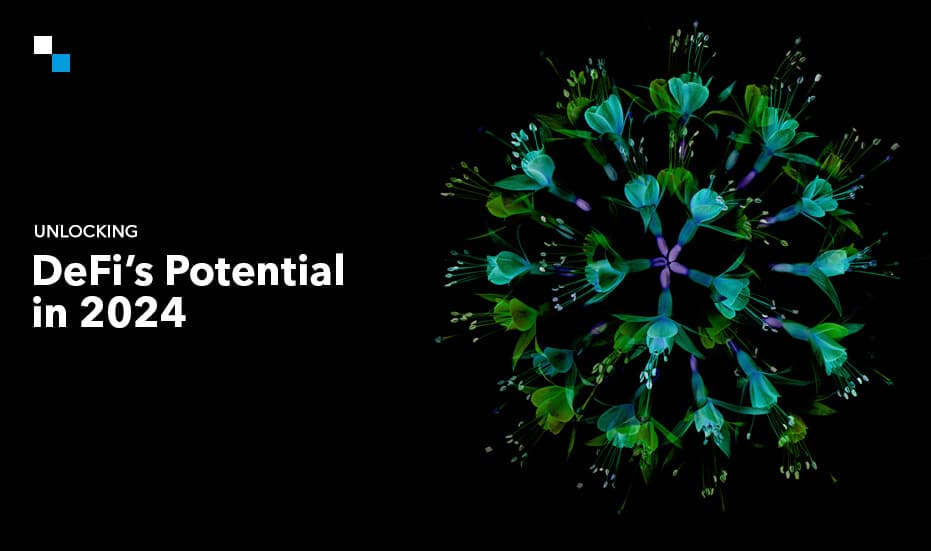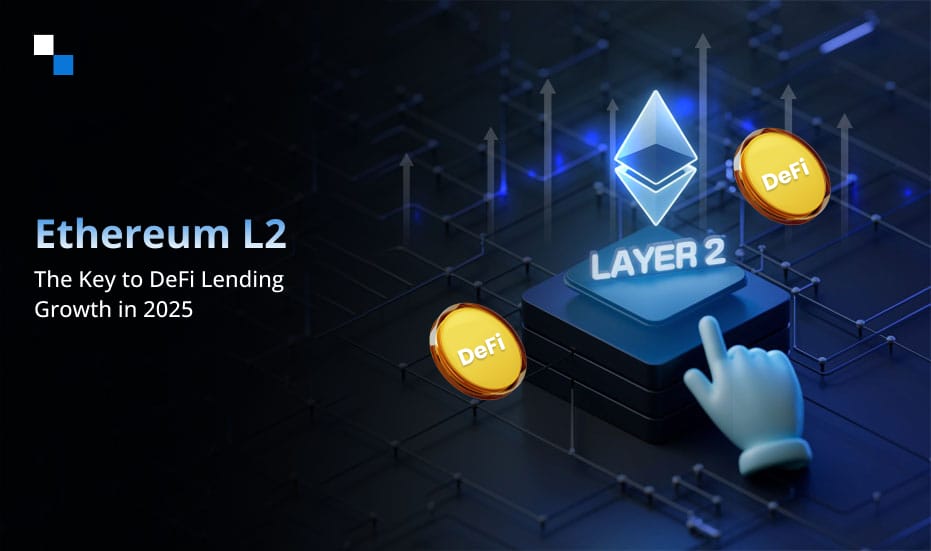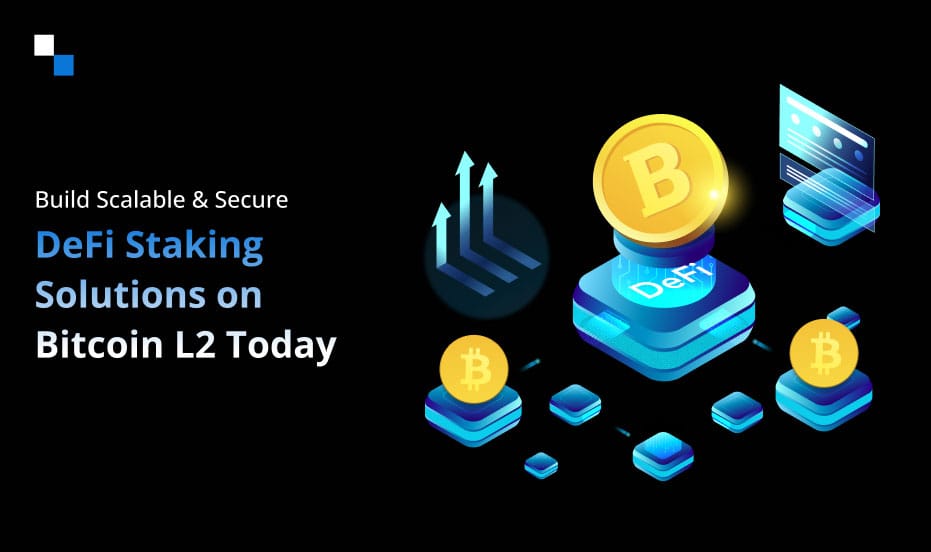Welcome to a journey into the future of finance, where innovation meets opportunity, and the landscape is constantly evolving. In this blog, we delve into the realm of Decentralized Finance (DeFi) to uncover the significant strides it is poised to take in the year 2024. As the financial world embraces decentralization, blockchain technology, and digital assets, DeFi development stands at the forefront of this transformation. Let’s dive in!
The Status of DeFi in the First Quarter of 2024
DeFi Sprouts Wings: A 291% QoQ DAA Surge Signals a Bullish Takeoff
DeFi defied gravity in Q1 2024, experiencing a colossal 291% surge in Daily Active Addresses (DAA) compared to the previous quarter. This isn’t just a blip on the radar; it’s a full-fledged rocket launch, fueled by a potent blend of returning capital and innovative yield generators.
Imagine a dormant garden suddenly exploding with vibrant blooms. That’s the image DeFi paints right now. Investors are flocking back, drawn by the sweet scent of potential returns. But this growth isn’t just about nostalgia. New protocols are sprouting like weeds, each offering unique ways to cultivate yield. The result? A thriving ecosystem buzzing with activity, a testament to the exciting year that lies ahead for DeFi.
DeFi vs Traditional Banks
DeFi and traditional banks aren’t necessarily mutually exclusive. They can co-exist and cater to different user needs. Traditional banks offer a familiar and secure environment for everyday financial transactions. DeFi, on the other hand, provides a glimpse into the future of finance, offering greater control, flexibility, and potential for innovation. The choice ultimately depends on your individual circumstances, risk tolerance, and financial goals.
Let’s dive into the core differences between DeFi and traditional banks to shed some light on this financial face-off.
Centralization vs. Decentralization:
The most fundamental difference lies in control. Traditional banks operate under a centralized model, meaning a single entity controls your funds, dictates transaction fees, and sets lending rates. DeFi, on the other hand, embraces decentralization. Here, power rests with the users, facilitated by blockchain technology. Transactions are recorded on a public ledger, accessible to all participants, and decisions are often made through community voting, which is a major reason for the popularity of DeFi development services.
Accessibility and Inclusion:
Traditional banks often have stringent requirements for opening accounts and accessing financial services. This can exclude individuals with limited credit history or those residing in unbanked regions. DeFi, with its permissionless nature, offers greater accessibility. Anyone with an internet connection can potentially participate in DeFi protocols, fostering financial inclusion on a global scale.
Transparency and Speed:
Traditional banks can be opaque in their operations, with complex fee structures and slow transaction processing times, especially for international transfers. DeFi offers a more transparent experience. Transactions are recorded on a public blockchain, allowing users to track their assets and fees in real-time. Additionally, DeFi transactions can be significantly faster and cheaper compared to traditional bank transfers.
Innovation and Flexibility:
Traditional banks tend to move slowly when it comes to adopting new technologies and financial instruments. DeFi, on the other hand, is a hotbed of innovation. New protocols and applications emerge constantly, offering users a wider range of options for managing their finances, from lending and borrowing to earning interest on their crypto holdings.
Security and Regulation:
Traditional banks are heavily regulated and typically boast robust security measures to protect user funds. DeFi, being a relatively new ecosystem, carries inherent risks. Smart contract vulnerabilities and hacks can lead to potential loss of funds. Regulations surrounding DeFi are still evolving, leaving some users wary of potential uncertainties.

DeFi’s Evolutionary Leap: Key Trends Shaping the Future
Let’s delve into key trends of DeFi development that are set to disrupt traditional finance by offering innovative financial tools and fostering a more inclusive financial ecosystem. However, for DeFi to reach its full potential, it needs to overcome certain challenges and embrace key trends that will shape its future. Let’s delve deeper into some of these critical areas:
1. Institutional Adoption:
- The Missing Piece: Mainstream adoption of DeFi hinges on attracting institutional investors. These institutions bring much-needed liquidity, stability, and credibility to the DeFi ecosystem.
- Shifting Landscape: Traditional financial institutions are increasingly exploring DeFi’s potential. Custody solutions, regulated DeFi products, and permissioned blockchains are paving the way for institutional involvement.
- Benefits for All: Institutional adoption benefits both sides. Institutions gain access to new investment opportunities and higher yields, while DeFi gains legitimacy and a more robust financial infrastructure.
2. Tokenization will power DeFi:
- Unlocking New Assets: Tokenization allows transforming real-world assets (e.g., real estate, artwork, intellectual property) into digital tokens tradable on DeFi platforms. This unlocks a vast pool of new assets for DeFi applications, expanding its reach and investment opportunities.
- Increased Liquidity: Tokenization facilitates fractional ownership, making previously illiquid assets more accessible to a broader investor base. This increased liquidity can fuel further growth within the DeFi ecosystem.
- Streamlined Processes: Tokenization automates many traditional financial processes, reducing costs and streamlining transactions. This efficiency boost can benefit both issuers and investors.
3. Interoperability and Cross-Chain Integration:
- Breaking Down Silos: Currently, DeFi protocols exist on different blockchains, creating isolated ecosystems with limited interoperability. Cross-chain bridges and interoperable protocols allow users to seamlessly move assets and utilize DeFi applications across different blockchains.
- Enhanced User Experience: Cross-chain integration eliminates the need to convert assets between different blockchains, creating a smoother user experience. Users can access a wider range of DeFi services without being restricted to a single blockchain.
- Unlocking DeFi’s Full Potential: Seamless interoperability allows DeFi to leverage the strengths of different blockchains, fostering innovation and unlocking the full potential of the decentralized finance ecosystem.
4. Regulatory Clarity and Compliance:
- Uncertain Terrain: The lack of clear regulations surrounding DeFi creates uncertainty for both users and developers. Regulatory ambiguity can hinder innovation and limit mainstream adoption.
- Finding the Balance: Finding the right balance between fostering innovation and protecting investors is crucial. Clear regulations can provide a framework for responsible DeFi development and instill user confidence.
- Collaborative Approach: Regulators, industry leaders, and DeFi developers need to work together to create regulations that are clear, adaptable, and promote responsible growth within the DeFi space.
5. Improved User Experience:
- Breaking Down Barriers: DeFi development can be complex and intimidating for newcomers. A user-friendly interface, intuitive design, and educational resources are essential to attract and retain users with varying levels of technical expertise.
- Mobile-First Approach: With the increasing use of mobile devices, a seamless mobile experience for DeFi applications is crucial for wider adoption.
- Focus on Usability: DeFi platforms need to prioritize user experience by simplifying complex functionalities and offering clear instructions and tutorials. This will make DeFi more accessible and user-friendly for the mainstream.
6. Enhanced Security Measures:
- Mitigating Risks: DeFi faces inherent security risks, such as smart contract vulnerabilities and hacks. Continuous improvement in security protocols, smart contract audits, and bug bounty programs are essential to mitigate these risks.
- Building Trust: Enhanced security measures are crucial for building user trust and confidence in DeFi platforms. Transparency and communication regarding security practices are also important.
- Collaborative Security Solutions: The DeFi community can benefit from collaboration on security best practices and sharing threat intelligence to collectively strengthen the overall security posture of the ecosystem.
7. Decentralized Governance and DAOs:
- Community-Driven Future: Decentralized Autonomous Organizations (DAOs) empower communities to make collective decisions regarding DeFi protocols. This fosters greater transparency, participation, and a sense of ownership among users.
- Evolving Governance Models: DAO governance models continue to evolve, with innovative voting mechanisms and on-chain proposals offering new ways for communities to shape the future of DeFi platforms.
- Challenges and Opportunities: While DAOs represent a powerful governance tool, challenges like voter apathy and potential manipulation need to be addressed. However, DAOs offer a glimpse into a future where communities are empowered to collectively manage financial tools and resources.
Final Words
Decentralized finance development is surely attracting mainstream businesses. DeFi has been solidifying its position as a transformative force in the financial landscape.
Are you looking for a reputed DeFi development company to start your new project? Get in touch today and discuss your requirements with Antier!





